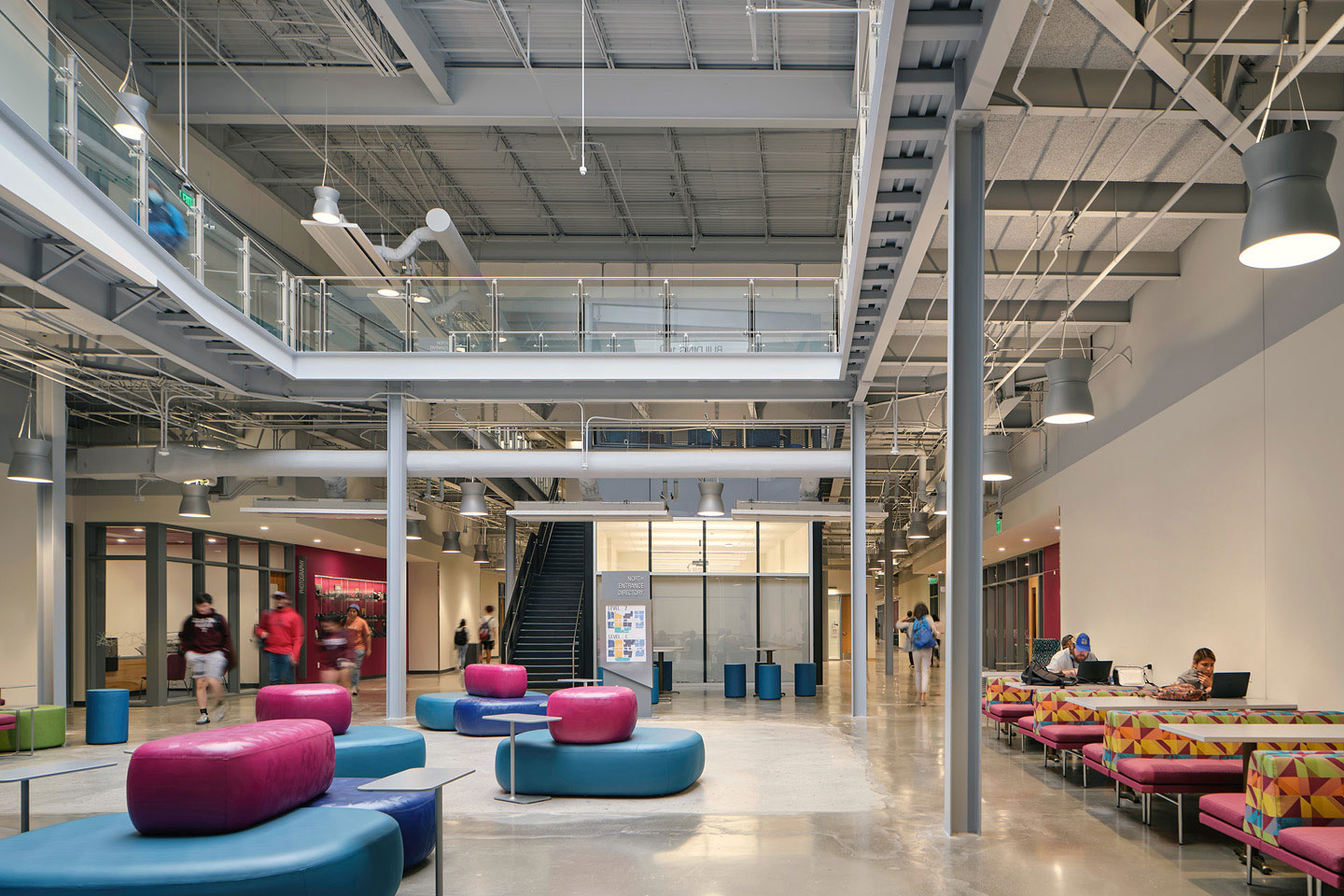Story at a glance:
- Adaptive reuse brings new life to older buildings that no longer serve their original design function.
- There are five main subcategories of adaptive reuse projects: renovation, integration, facadism, preservation, and infrastructural.
- Advantages of adaptive reuse include waste reduction, resource conservation, lower construction costs, and more.
If you’ve ever seen or been inside a building that serves a different function than it once did—say a former aviation hangar turned office space or shopping mall turned community college, you’ve experienced the long-standing architectural practice of adaptive reuse. Adaptive reuse is the sustainable idea that old buildings can and should be renovated rather than demolished once they’ve outlived their original purpose.
But is it really that simple? What benefits does adaptive reuse offer that make it a more enticing prospect than building from the ground up? What challenges can one expect to face when adapting a building’s function?
What is Adaptive Reuse?
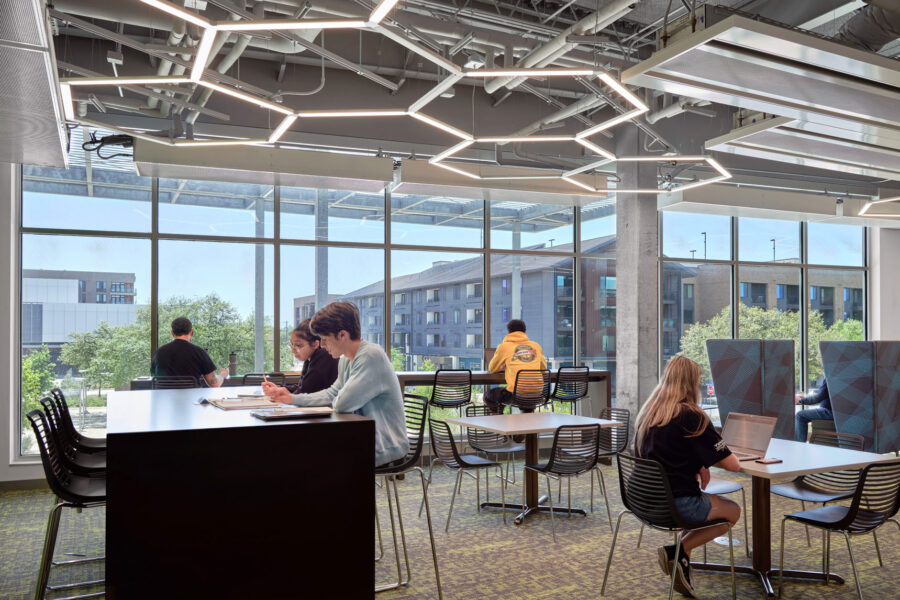
Plentiful natural light fills this collaborative learning space at Austin Community College’s Highland Campus. The adaptive reuse project was originally a shopping mall. Photo by Dror Baldinger
While the term may have only originated in the mid-1970s, adaptive reuse as a practice is nothing new—it simply refers to the process of refurbishing a building for purposes other than those that it was originally built for.
Adaptive reuse projects serve as a means of extending buildings’ operational lifespans by updating them to better address the economic and social needs of their respective communities.
Why is Adaptive Reuse Important?
Now that we’ve familiarized ourselves with the basics of adaptive reuse, let’s talk broadly about why adaptive reuse is such an important practice within the field of sustainable architecture.
In the fundamental sense adaptive reuse prolongs the lifespan of existing buildings in an attempt to limit further resource and energy consumption, which in turn helps reduce the amount of waste and harmful emissions produced by the world’s built environment.
This is important due to the fact that buildings account for approximately 40% of the world’s carbon emissions, while the construction industry is responsible for extracting over 30% of the world’s natural resources and producing 25% of the world’s solid waste.
A Brief History of Adaptive Reuse
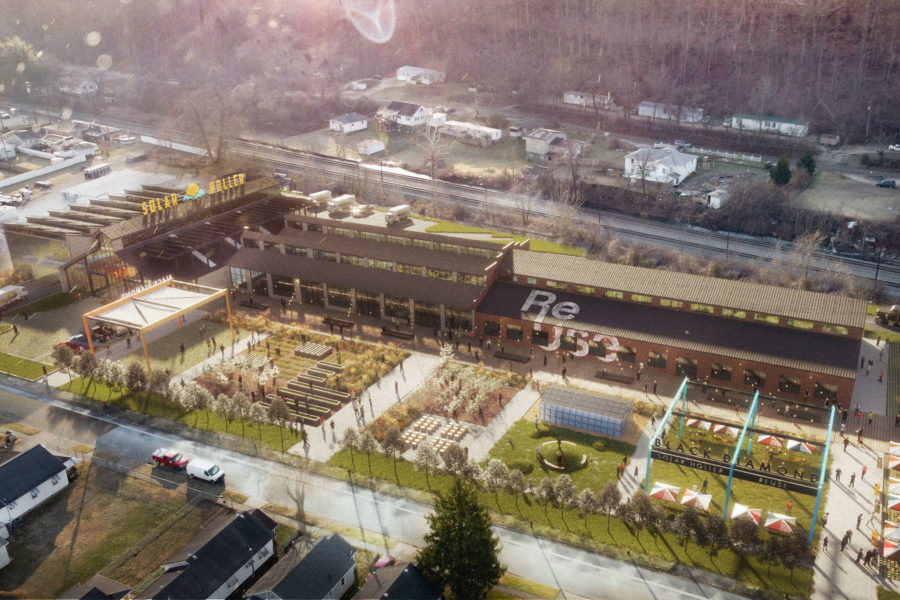
WXY and Edward Tucker Architects are designing a major adaptive reuse project along with SB Friedman for the community-based group Coalfield Development. Rendering courtesy of WXY architecture + urban design
For as long as buildings have existed they have been repurposed and reused to fulfill roles other than those they were originally intended for; in that sense adaptive reuse isn’t a particularly modern concept. Cities like Rome, Athens, Venice, and London are all famous for their preservation and reuse of historic structures.
Adaptive reuse as part of the sustainable building design movement, however, is a much more recent notion—one born out of a concerted effort to maximize development space and reduce the consumption of natural resources.
One of the first well-known examples of modern adaptive reuse—in the United States, that is—took place during the early 1970s when Boston’s Old City Hall was converted into offices and gourmet restaurants, a move that ultimately helped bolster the local economy. Following this success adaptive reuse projects began to crop up all throughout the US to help revitalize dying urban centers and bring in revenue.
By the late 2010s concerns surrounding global warming and increasing carbon pollution led the Intergovernmental Panel on Climate Change to declare adaptive reuse as necessary in reducing construction emissions and mitigating the effects of anthropogenic climate change.
Today real estate agents estimate that within the next 10 years approximately 90% of new real estate development will involve some manner of adaptive reuse.
Types of Adaptive Reuse
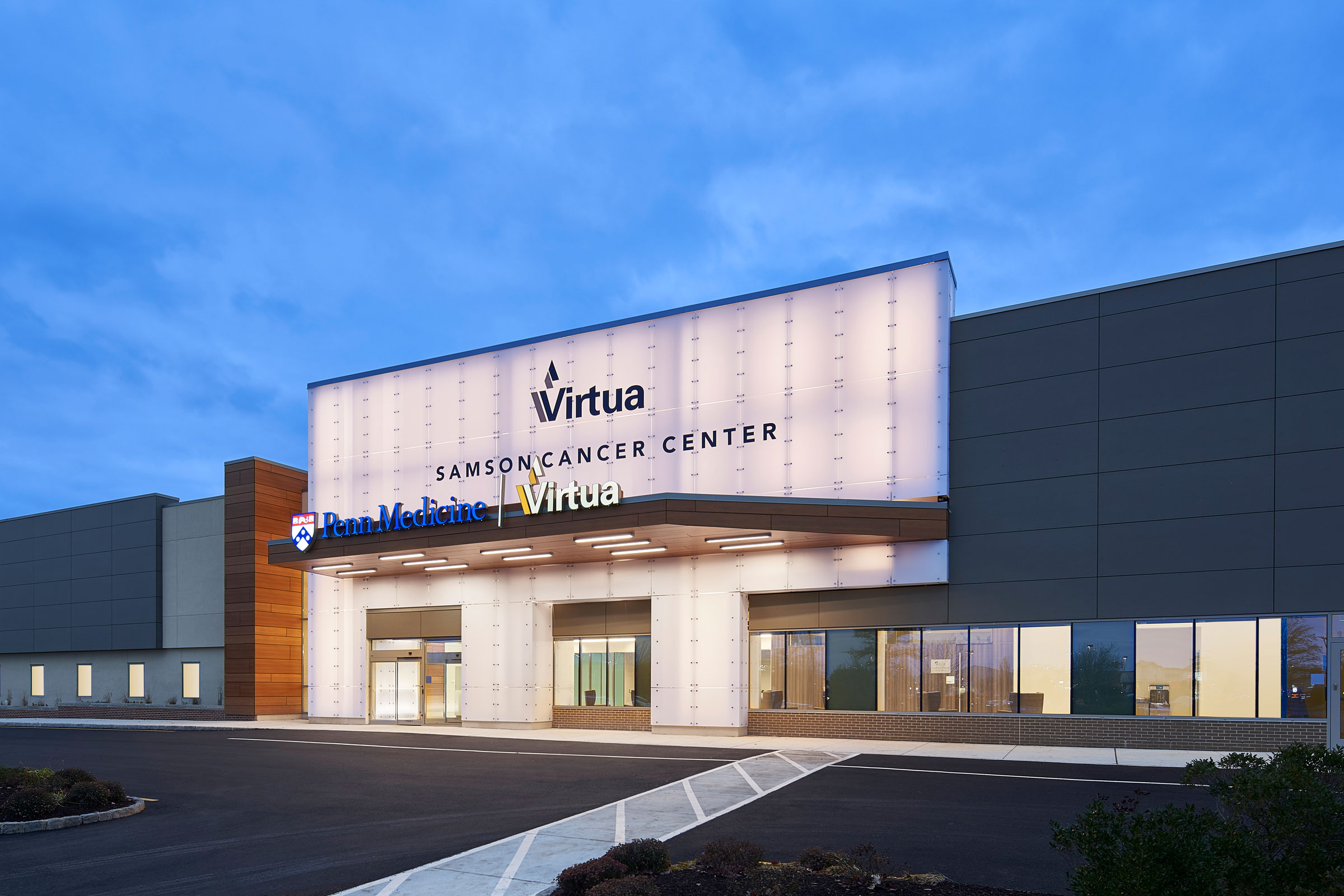
FCA designed this Virtua Samson Cancer Center project from a former supermarket. Photo courtesy of FCA
It should be noted, however, that not all adaptive reuse projects operate in the same manner, nor do they always have the same design goals. In fact, there are five core types of adaptive reuse projects to be aware of: renovation, integration, preservation, facadism, and infrastructural.
Renovation
As probably the most well-known type of adaptive reuse, renovation in this context describes the practice of making minimal changes to a building’s exterior while rebuilding and refurbishing the interior for a completely new purpose. One such example of renovative adaptive reuse is the Virtua Samson Cancer Center, a health care facility designed by Francis Cauffman Architects (FCA) in Moorestown, New Jersey that used to be a grocery store.
“Choosing to repurpose an existing building is a socially responsible and sustainable way to bring care closer to the communities that need it,” Aran McCarthy, FCA’s principal of health care, previously told gb&d.
Integration
Integrative adaptive reuse, on the other hand, is something you don’t see too often. Instead of leaving the exterior untouched while making renovations to the interior, integrative adaptive reuse projects build an entirely new structure around or attached to an existing structure.
Preservation
Adaptive reuse can also take the form of preservation, in which a historic building’s exterior and interior aesthetics are left largely unchanged aside from building code and efficiency upgrades. These projects help preserve and restore a building’s historic significance while still adapting the structure’s overall function to better serve the community. In this sense preservation can be an incredibly meaningful form of adaptive reuse.
The Robert Frost Stone House Museum in Bennington, Vermont, for example, has preserved the home of one of America’s most influential poets by turning it into a museum that honors his life and legacy. The house’s materials, interior features, and furnishings are all original, but it no longer serves as a private residence.
Facadism
Alternatively, buildings with minimal historical significance or significant interior dilapidation may be adapted via facadism—an approach that leaves the front-facing exterior largely unchanged but demolishes and rebuilds the majority of the structure behind it. Facadism as a means of adaptive reuse is incredibly popular in Australia, as exemplified by Melbourne’s Collins Street.
Infrastructural
Finally, adaptive reuse as a concept applies to more than just buildings themselves. Infrastructural works like railways, highways, and industrial plants can also be adapted to serve new functions.
An inspiring example of infrastructural adaptive reuse is London’s renovation of the Bankside Power Station into the Tate Modern, one of the largest modern and contemporary art museums in the world.
Advantages of Adaptive Reuse![]()
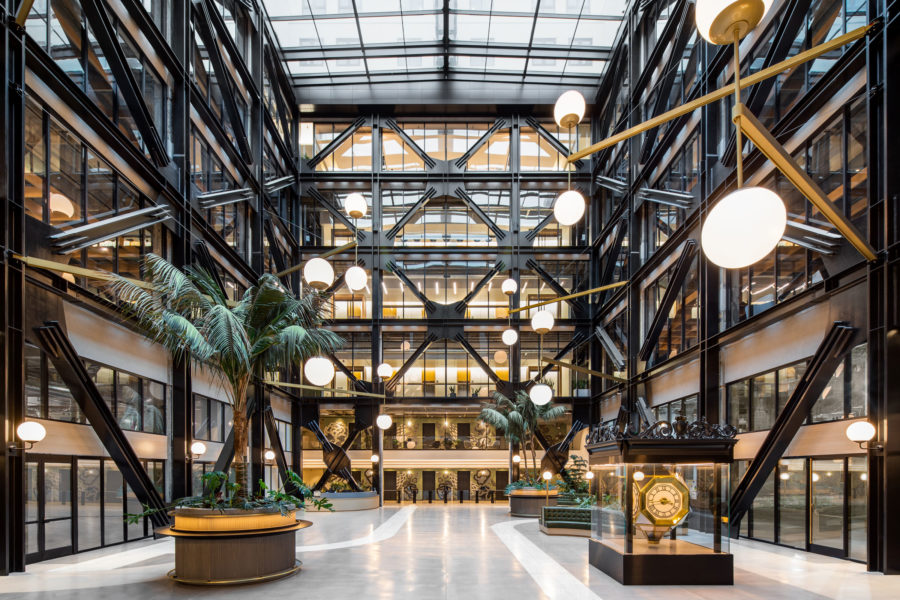
Formerly a department store, Uptown Station in Oakland, CA is now a mixed-use development designed by MBH Architects. Photo by Tyler Chartier
Adaptive reuse can be implemented in a variety of ways, but what are the actual advantages of reusing an old building? What benefits does adaptive reuse offer to make it a better option than constructing an entirely new building from the ground up?
Waste Reduction & Resource Conservation
For starters, building projects that require an existing structure be demolished typically end up producing a significant amount of waste—waste that, more often than not, ends up in a landfill. Adaptive reuse projects, on the other hand, seek to recycle and reclaim as much of the original building stock as possible, which in turn helps conserve energy and resources.
Many older buildings were also built to regulate temperature naturally and often make ample use of natural sunlight—both of which help reduce the energy needed to heat/cool and illuminate the finished project.
Reduced Construction Costs & Faster Construction
Since adaptive reuse projects try to reuse rather than buy new materials, the overall construction costs are reduced—sometimes by as much as 16%. Adaptive reuse projects also save money by eliminating demolition costs, which can account for 5 to10% of new construction expenses.
What’s more, renovating an existing building typically takes less time than constructing a new one from scratch. Aside from the fact that the framework is already there, buildings that are adapted do not need to be completed before occupancy; as soon as one section is done, businesses can move in. All in all this helps minimize potential economic losses.
Urban Regeneration & Historic Preservation
Lastly, adaptive reuse projects can help revitalize impoverished and run-down communities by bringing in new businesses, schools, low-income housing, or social centers and facilitating the growth of economic and social capital—a process known as urban regeneration. In this regard adaptive reuse also helps combat urban sprawl by making the most out of land that has already been developed.
Furthermore, the renovation of existing buildings helps preserve their historic value in a way that actually benefits the community. “The architectural landscape of a place is often shaped by the geography, community, and culture that is unique to each city and town,” Tom Pflueger, studio director of MBH Architects, previously told gb&d. “Historic renovation projects aim to preserve these special places that are unique to a city and relevant to visually telling the city’s history.” Repurposing these structures allows for sustainable development that gives back rather than takes from the surrounding community.
Challenges of Adaptive Reuse
Of course, no adaptive reuse project is without its challenges. And while the exact difficulties will vary from project to project, they typically fall into one of the following categories: regulatory, economical, or practical.
Regulatory
One of the biggest barriers to adaptive reuse is the limitations imposed by certain building codes and regulations, which can vary widely between county and state lines. Whenever a structure’s purpose changes, it must be updated to comply with any codes and licensing requirements applicable to its new classification.
Many older buildings, for example, do not meet today’s accessibility, safety, and energy requirements, which means more money will need to be spent at the outset to bring the building up to code.
What’s more, modern zoning stipulations can limit a building’s adapted reuse options, which can make it difficult to find a suitable location for the desired project. To mitigate these challenges, consult with professionals who have experience dealing with your area’s local building laws.
Economical
Despite typically having lower construction costs, adaptive reuse projects may face a range of economic challenges that reduce the viability of renovating a property, including:
- High labor costs. On average, labor costs account for 60% of the expenses associated with adaptive reuse projects, as they require more skilled professionals than new construction projects do.
- High repair costs. Depending on the state of the building itself, the expenses needed to bring it up to code—and continue maintaining it—may be too great to justify the time and energy that renovations would actually take.
- Lack of stakeholders. Due to the real and perceived risks of adaptive reuse projects, many stakeholders are reluctant to help fund large-scale renovations for fear of losing money.
Fortunately, there are tax incentives and government programs that can help supply funding to adaptive reuse projects that meet certain criteria. The Inflation Reduction Act, for example, offers a tax deduction for projects that reduce an existing building’s energy usage. Projects that qualify for federal historic tax credits are eligible to have up to 20% of their construction costs paid for.
Practical
Finally, there are a few practical challenges that plague adaptive reuse projects, including constraints imposed by a building’s existing layout. Heavily compartmentalized structures, for example, are harder and more expensive to modify than buildings with an open interior. What’s more, older buildings typically require more complex refurbishing solutions that may be beyond the scope of many industry professionals.
It can also be difficult to find accurate blueprints and other important information—such as material or dimensional inconsistencies—on older buildings slated for redevelopment, which can hinder and lengthen the redesign process.
That said, adaptive reuse places a lot of emphasis on finding creative solutions to practical design barriers—if you have the time and budget, your architect should be able to help figure out ways around them.
Examples of Adaptive Reuse in Action
Despite these challenges, there are plenty of successful adaptive reuse projects to draw inspiration from. A few of our favorites include:
The Night Ministry
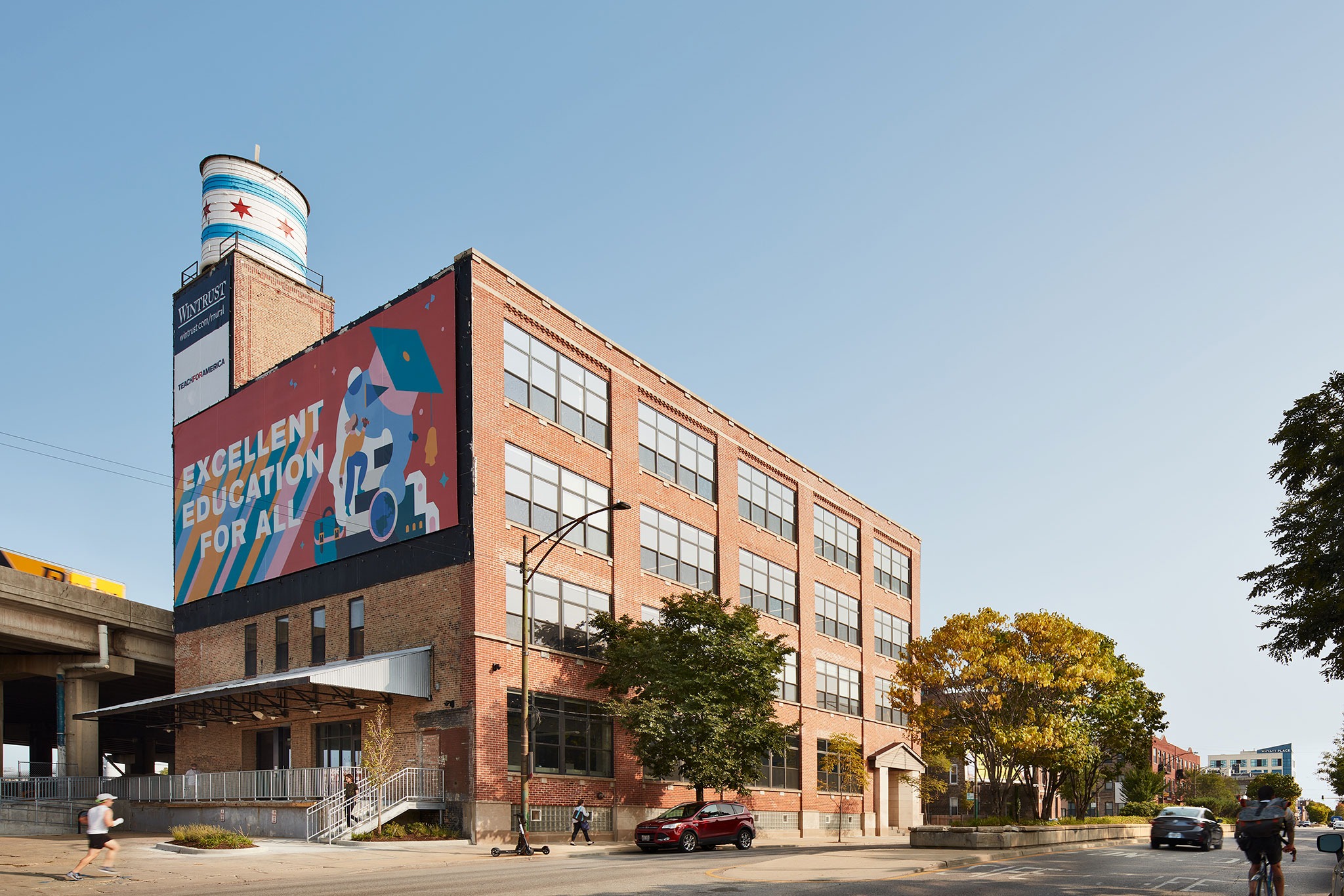
Wheeler Kearns Architects designed The Night Ministry in Chicago, renovating three floors of a former manufacturing facility in the Bucktown neighborhood. Photo by Kendall McCaugherty, Hall + Merrick Photographers
In Chicago The Night Ministry headquarters is an excellent example of how adaptive reuse can be used to strengthen communities and foster social equity. Built in 1910 as a manufacturing plant, the building that now houses The Night Ministry—a nonprofit that provides a variety of social services—was redesigned in 2020 by Wheeler Kearns Architects to serve as both the organization’s administrative office and as a community-outreach center.
“The Night Ministry’s new home revitalizes an underutilized building, known for the murals that adorn its exterior, into a welcoming and safe community asset,” Erica Ulin, the project lead at Wheeler Kearns, told gb&d in a previous article,
Separated into three floors, The Night Ministry’s ground floor houses “The Crib,” an overnight shelter for young adults that includes showers, restrooms, sleeping quarters, a kitchen, and a multipurpose dining room. Outside a repurposed loading dock functions as an accessible entrance. Administrative offices and meeting spaces are housed on the second and third floors, allowing The Night Ministry’s employees to continue to provide warm meals, housing support, and healthcare services to those experiencing poverty and homelessness in the greater Chicago area.
Village Hall
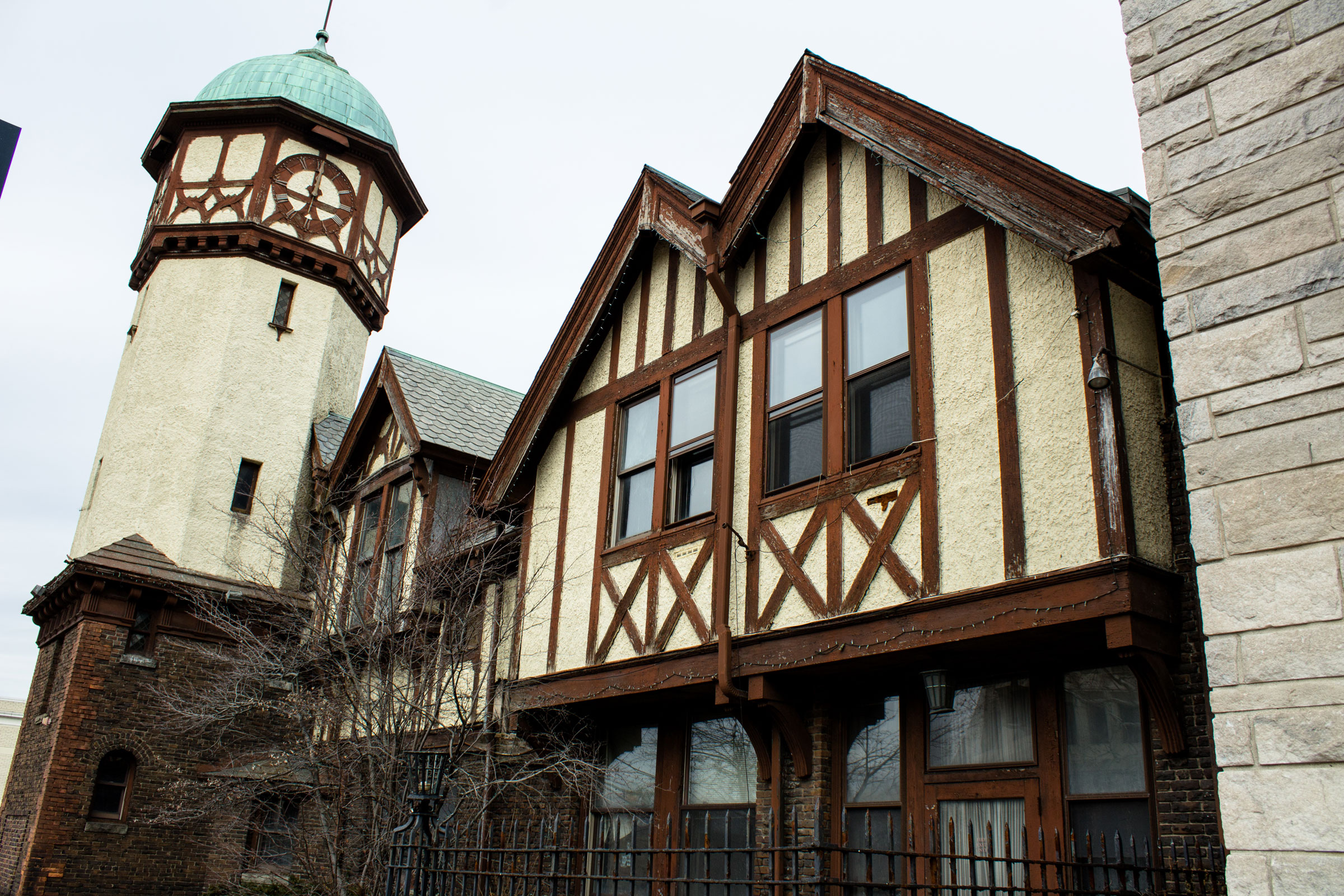
Exterior of South Orange Village Hall, South Orange, New Jersey. Photo courtesy of Landmark Hospitality
After the city of South Orange, New Jersey moved the bulk of its municipal services online, there was little practical need for the town’s city hall—a dilemma that left city officials scratching their heads as to what to do with it. Demolition was out of the question due to the building’s historic significance, but the costs associated with its continued upkeep would be steep.
To remedy this problem, South Orange’s mayor put out a request for adaptive reuse proposals, at which point the South Orange Village Hall was born. Redesigned by the Landmark Hospitality group in 2021, the South Orange Village Hall now serves as a restaurant, beer garden, and event space—all of which help bolster South Orange’s local economy while also preserving an incredible piece of historic architecture.
“From a design standpoint, this property is incredible to work with,” said Frank Cretellais, cofounder and principal of Landmark Hospitality, in a previous article for gb&d. “With this project we get to mix the old with the new, revitalize a community, and do this all within a historic building full of stories.”
Austin Community College

Perkins&Will and Barnes Gromatzky Kosarek Architects transformed a vacant shopping mall into a thriving Austin Community College campus. Photo by Dror Baldinger
In a world increasingly dominated by e-commerce and online shopping, it’s no secret that malls have long been on the decline—but what happens to those malls once they shut their doors? In the case of the Highland Mall in Austin, they become college campuses.
Originally built in 1971, the Highland Mall would start to flounder in the early 2010s. In 2012 it was bought by the Austin Community College, who began renovations with the intent of integrating it into the ACC campus network. Having completed its first phase of renovations in 2014 and its second phase in 2022, the ACC Highland Campus now features a library, classrooms, labs, and more, all housed in the shell of the old shopping center.
“There was potential to make a huge impact within the neighborhood, becoming a center for innovative learning and bringing a renewed energy to a very important part of Austin,” Gardner Vass, design principal with Perkins&Will, previously told gb&d. “The mall site has many advantages—being a central hub near major roadways, having several adaptive reuse building opportunities, and being close to public transportation.”
DADA Distrikt
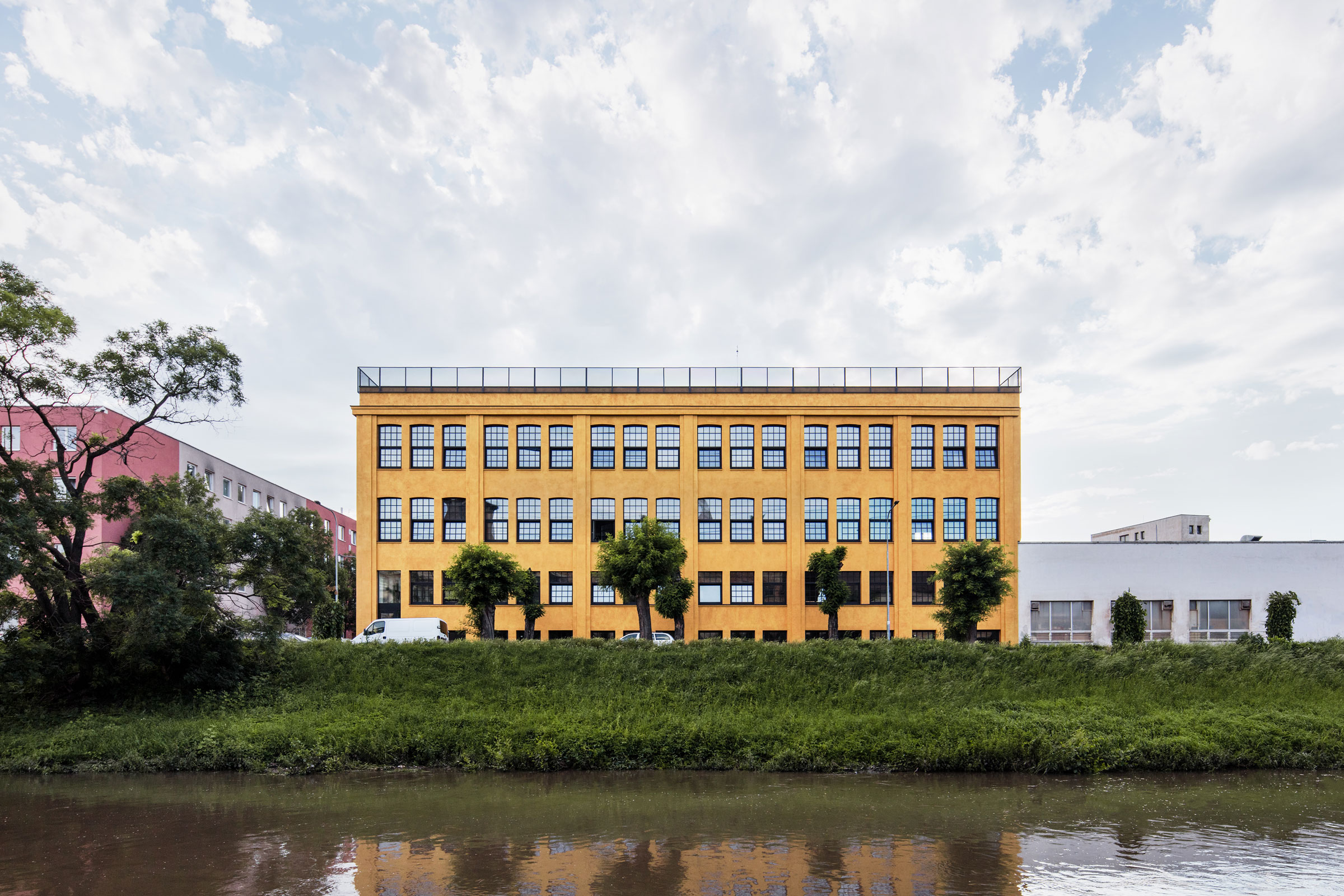
DADA Distrikt, designed by KOGAA Architects. Photo by Kubicek Studio
Designed by KOGAA and completed in 2020, the DADA Distrikt in the Czech Republic is a stellar example of how defunct industrial works can be repurposed for the betterment of the community. Originally built as a storage facility, the DADA Distrikt now serves as a mixed-use office and residential space that offers affordable housing options.
Rather than try to hide the DADA Distrikt’s industrial aesthetics, KOGAA architects elected to embrace that part of the building’s history—a decision that led to the preservation of the building’s exterior, rounded-corner staircase, and elevator car.
In order to make the building more sustainable in its renovated state, the KOGAA team installed a green roof to help manage rainwater runoff and reduce the risk of flooding. A gray water recycling system was also added to supply water to the building’s irrigation system and washrooms.
Conclusion
At the end of the day true sustainable design doesn’t always require the construction of new buildings, as there are plenty of existing structures that, for one reason or another, lie vacant or abandoned. Rather than demolish these buildings, it’s in our best interest to refurbish, reuse, and revitalize these structures—a practice that ultimately helps reduce waste, minimize emissions, and combat the expansion of urban centers.
If you or your company are looking to build a new location or expand an existing one, it’s a good idea to look into the feasibility of adapting and reusing an old building that has since outlived its original purpose. You’ll save on initial construction costs, reduce your business’ carbon footprint, and preserve a piece of local history for future generations.

